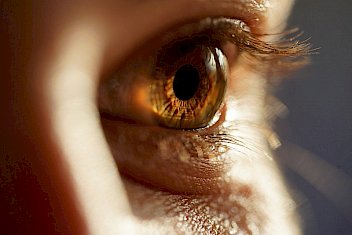- Get in touch!
- See Our Locations
Dry Eye Syndrome & Treatment

Find relief from dry, itchy, irritated eyes.
Dry eye is a complex condition. Let us help you better understand what dry eye is and why it matters!
Dry eyes affect millions of people in the United States. It is estimated that as many as 4.88 million Americans over the age of 50 suffer from this uncomfortable condition.
Learn from Vision Source Studio 20/20 about dry eye syndrome, how it influences someone’s life, and why it is important to treat dry eye early.
Dry eye syndrome is a condition in which the tear glands do not produce or stabilize enough tears to lubricate and nourish the eye. Dry eye syndrome typically starts with general eye discomfort, symptoms of grittiness, itching, and/or intolerance to contact lenses. Dry eye can then progress to a debilitating disease if not properly treated. If untreated, dry eye can cause constant pain throughout the day, decreased vision, and damage to the ocular surface.
The tear film that coats the front surface of the eye is responsible for maintaining clear and consistent vision, protecting our delicate cornea and corneal nerves from the environment/airborne bacteria and allergens, as well as keeping our eyes comfortable throughout the day.
Find a treatment option that brings you relief.
What are the common symptoms of dry eye?
Everyone experiences dry eye differently because there are so many potential underlying causes.
Typical symptoms include:
- Redness or eyes that appear irritated and bloodshot
- Consistent burning or tingling sensations in the eyes
- Eyes that feel itchy or as if they have something in them
- Increased sensitivity to bright lights or sunlight
- Excessive tearing, or eyes that always appear watery
Why is it important to treat dry eye early?
- To continue to see clearly: Our tears have many functions, including protecting the surface of the eye, as well as allowing for clear and comfortable vision. Without a stable and healthy tear film, our vision can and will eventually suffer, especially for contact lens wearers. Blurred vision secondary to dry eye syndrome is like looking through a window smeared with oil.
- To continue to wear contact lenses: Dry eye syndrome is the number one reason for discontinuing contact lens wear due to discomfort and poor, fluctuating vision.
- To prevent eye infections or inflammatory disorders: Dry eye syndrome is a common precursor to various types of eye infections and inflammatory disorders. One common infection is herpes simplex or zoster keratitis. If you have ever had chicken pox, the virus lays dormant waiting for an opportunity to express itself. Herpes simplex and zoster can cause blindness if scarring develops after infection.
- To keep the eyes comfortable: Dry eye syndrome causes the eyes to be very uncomfortable. The discomfort is caused by the corneal nerves being exposed to air instead of being shielded by our tears. Dry eye pain is often associated with high levels of depression.
Schedule an appointment today at one of our convenient locations!





